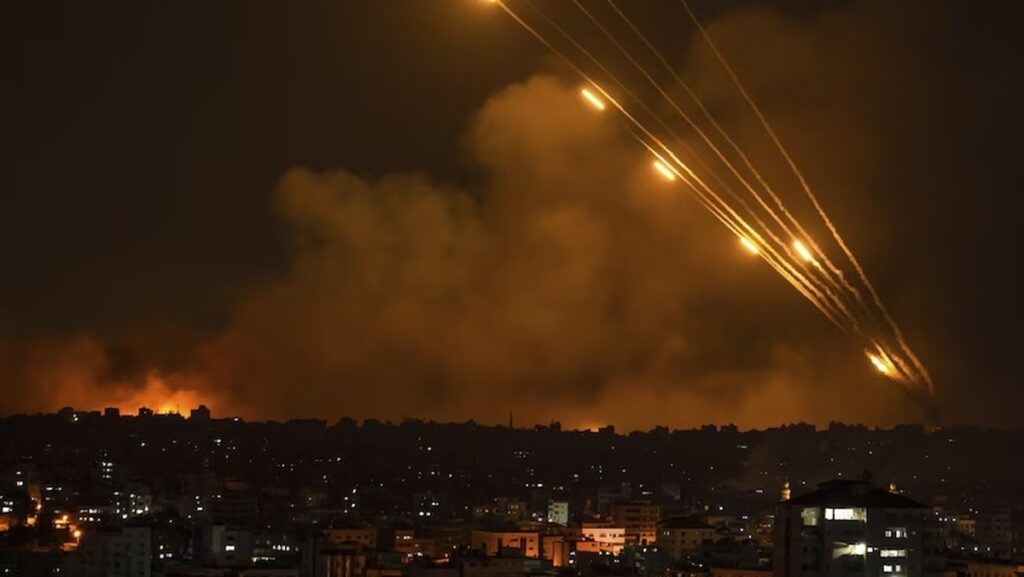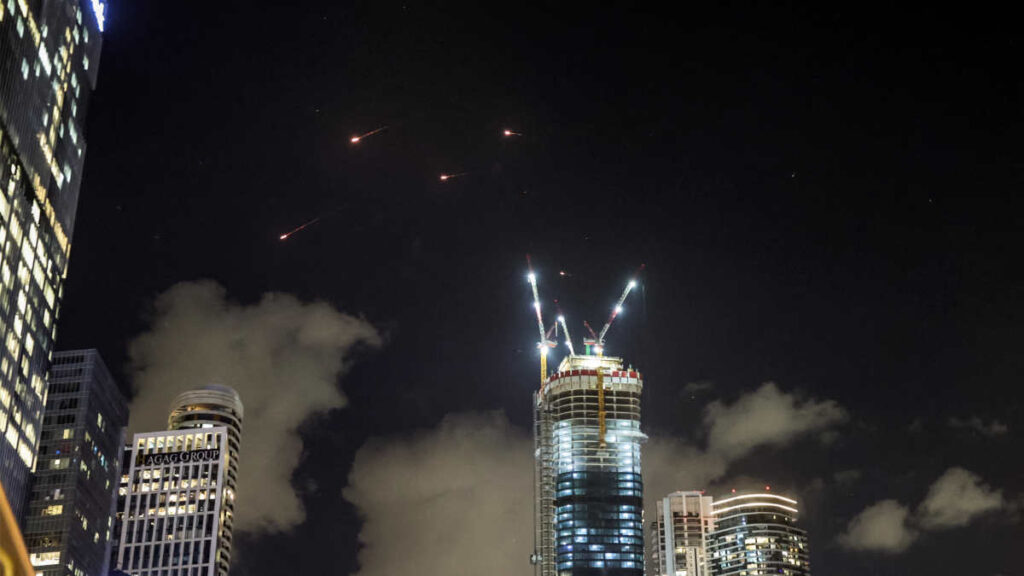Iran attacked Israel on Tuesday evening. Which kinds of weapons were employed? Iran possesses a cache of drones, ballistic missiles, and cruise missiles that it has lately employed against Israel. Iran is thought to have fired 200 ballistic missiles on Tuesday night.
Iran vs Israel War Update :
Let’s concentrate on that for a little while. To begin with, Iran launched its 300-kilometer-range Shahab-1 missile. Since it has a limited range, it cannot directly strike Israel. It can only hit targets that are distant from Israel.

The Fateh missile is an additional weapon with a range of 300–500 kilometers. Once more, this range is not long enough to reach Israel.
Despite having a 500-kilometer range, the Shahab-2 missile is unable to reach targets within Israel.
Israel is nearly within range of the Zolfaghar missile. Its 700-kilometer range means it might be able to attack parts of Israel.

Additionally, there is the Qiam-1 missile, which has a 750-kilometer range—50 kilometers farther than the Shahab-2. Though it can still’t reach very far into Israel, this missile is more sophisticated and has a wider target.
On the other hand, the Shahab-3 missile can reach every part of Israel with ease thanks to its 2,000-kilometer range. It can actually strike several different locations in the vicinity. This missile, or any of its variations, could have been employed in the assaults on Tuesday.

However, Israel possesses one of the most advanced ballistic missile defense systems in the world. The defense system is multi-layered, and it seems that it was compromised last night. Iranian rockets can be seen hitting Tel Aviv in videos. Videos of the ballistic missiles being launched from Iran’s territory were also made public.
It’s unknown how many of these missiles actually found their objectives or if any of the damage was due to missile fragments that fell to Earth after Israel’s missile shield intercepted them. Although we frequently discuss the defensive use of Israel’s surface-to-air missiles (SAM), we also need to consider the range and height at which Israeli interceptor SAMs were able to destroy Iranian ballistic missiles.
Let’s talk about Israel’s Arrow system first. The phrases “missile” and “system” are frequently used interchangeably since it is a component of a bigger system. The range and height of a SAM system must be taken into account.
Ballistic missiles approaching from the exosphere, which is barely outside the atmosphere, can be intercepted by Israel’s Arrow system. It has a 2,000–2,400 kilometer range and a 100 kilometer altitude capability. It may be the world’s most sophisticated system of its sort.
The Iranian missiles last night were probably intercepted by other systems as well. Next up, let’s examine David’s Sling. This device can intercept at up to 15 kilometers above the ground and has a 300-kilometer range.
And then, there’s the Iron Dome, a topic of much discussion. It is a missile defense system with a comparatively limited range. In fact, the Iron Dome is frequently brought up when discussing Israel’s defenses. But it’s the last line of defense and only a small portion of the entire missile defense system.
Its range is about 70 kilometers, and it can intercept at heights of up to 10 kilometers. It isn’t made to stop ballistic missiles. It is more capable of withstanding short-range rockets fired by organizations such as Hezbollah and Hamas.
Although there was undoubtedly a systemic breakdown, luckily few lives were lost. It is thought that Israeli military installations have sustained the most damage.
